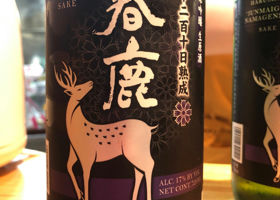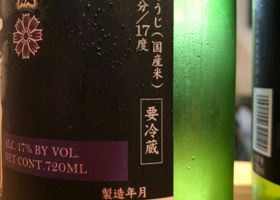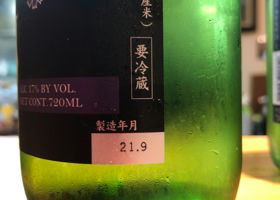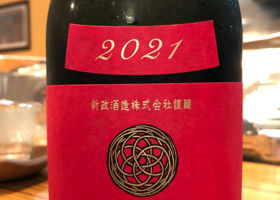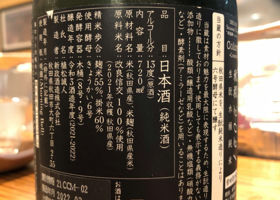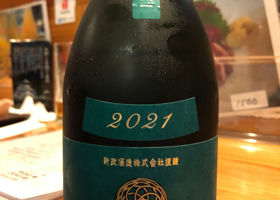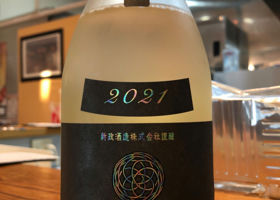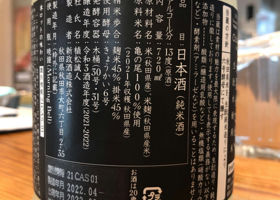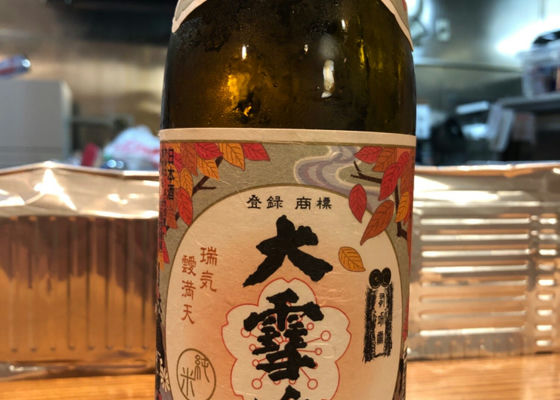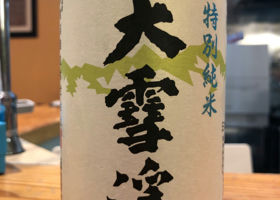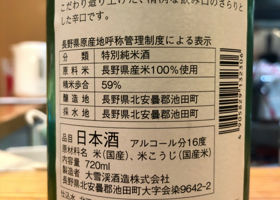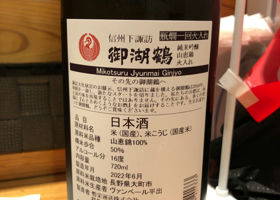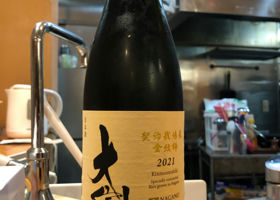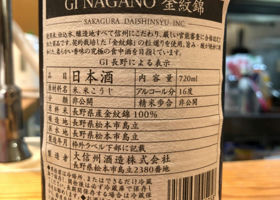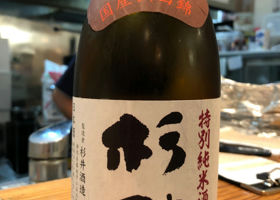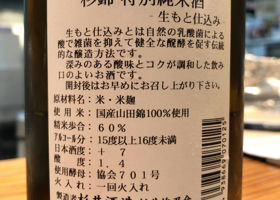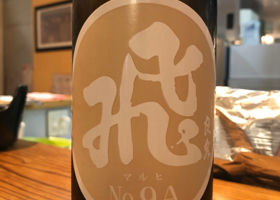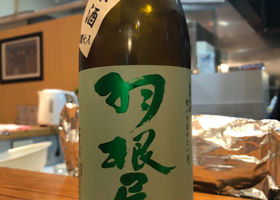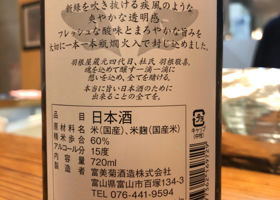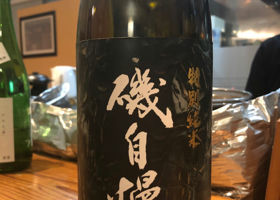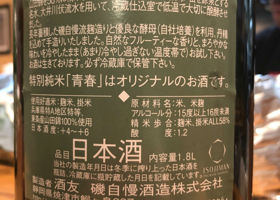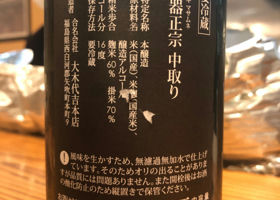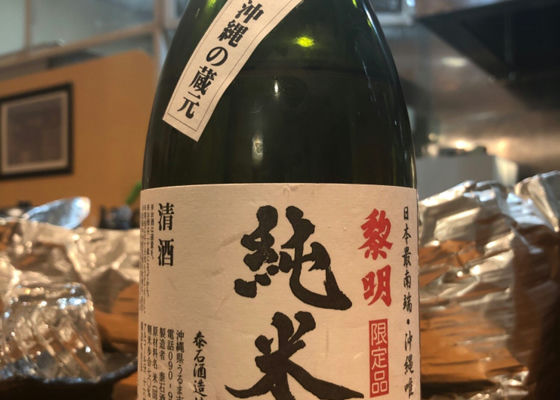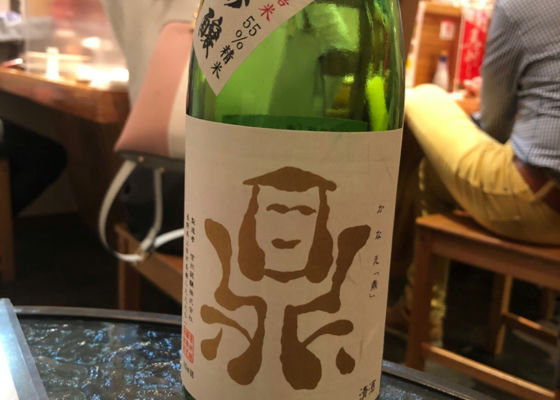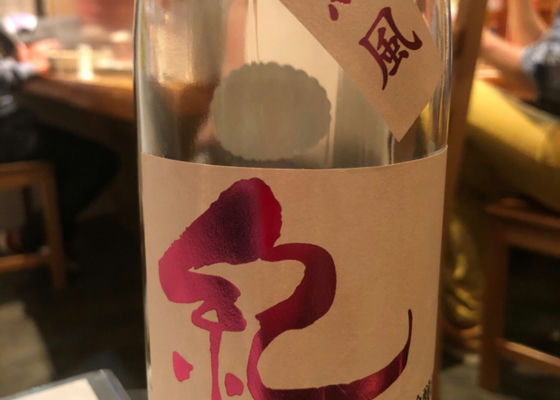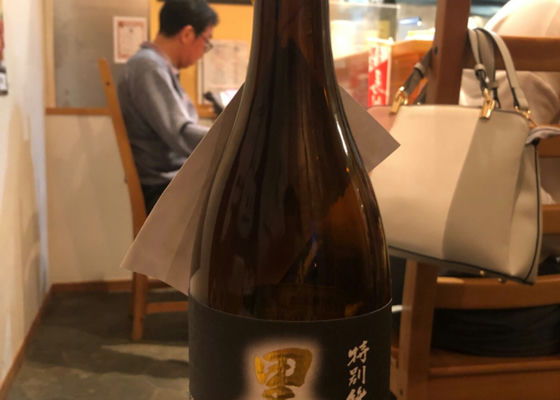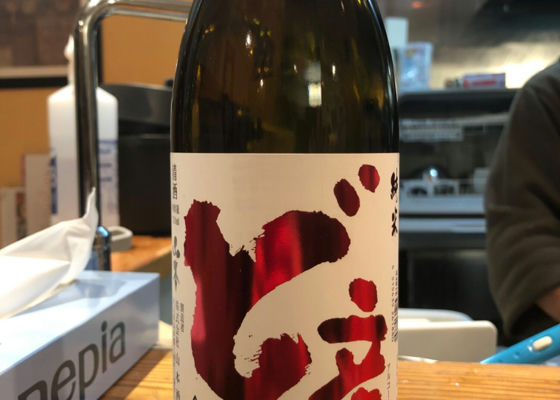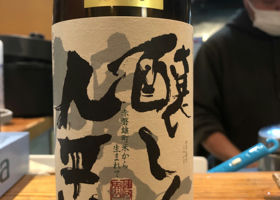Timeline
なまころVertical drinking of Harushika.
There are three types: freshly made, one year old, and two year old.
The freshly made one has a hard taste with a slight alcohol smell and a bit of a curd, whereas the aged one becomes more mellow with each passing year. なまころThis is the fourth stage of the Shinsei horizontal drinking.
The flavor trend is similar to that of the third Viridian label, but the umami and acidity tend to be a bit more subdued, giving the impression that it is easier to drink.
It is easy to drink with anything, and is popular with all people. なまころThis is the third Niimasa horizontal drink.
While No. 6 and Suiboku have a refreshing taste and are easy to drink without any accompaniments, this one has a strong umami, so it is good to drink it while having some accompaniments.
Since it has a clean aftertaste, I have the impression that it would go well with a side dish that has a delicious yet refreshing aftertaste, such as steamed clams with sake. なまころShinsei horizontal drinking.
The second one is Suiboku (Ash).
While No. 6 had a neutral mouthfeel and a sour aftertaste, Suiboku had a sour mouthfeel and a neutral aftertaste.
It has a pleasant orange 🍊-like acidity that is neither too sharp nor too soft.
It also has a hint of sweetness in the aftertaste, making it more drinkable than No. 6.
I would definitely like to drink it with delicate Japanese food. なまころThe day to drink Shinsei No. 6 finally arrived.
After a good night's sleep the day before, a little exercise in the morning, a bath, and brushing my teeth, I was in perfect physical condition for the perfect saké.
The taste is extremely neutral, with no sense of alcohol, and the acidity and sweetness are all in perfect balance.
The mild flavor characteristic of No. 6 yeast is evident.
The citrusy acidity continues in the aftertaste, which is very pleasant.
One of the most complete sake. なまころCompared to normal Daisetsuken, it has a nice, curdled feel and is easy to drink. I recommend it even to those who don't like sake.
I have never had hiyaoroshi before, but it's not good to not like it without trying it. I would like to drink it actively from now on. なまころIt has a wonderful balance between rich sweetness reminiscent of honey and firm acidity.
It is neither too heavy nor too light, making it easy to pair with food. なまころThe solid acidity, sweetness, and flavor are all very powerful, yet very well balanced in the mix.
It has a good aroma that is different from lychee, orange, and melon, which is not in my taste DB.
As expected of a sake that won the world's top prize❗️
It is different from Ottersai Jiwari Sanbe and Hanzo Junmai Daiginjo, very gorgeous and powerful, and seems to have a yo-kai impression that would be popular with foreigners. なまころThe rice polishing ratio is undisclosed, so it is unclear whether it is a daiginjo, ginjo, or regular junmai sake.
It has a strong acidity and is a perfect match for sashimi❤️The rice polishing ratio is probably not that high, but the rice may be good or it may not have a bad taste. なまころThe delicate acidity and wood(?) aroma of the sake is impressive. The aroma of wood(?) is impressive.
It has no sweetness or melon ginjo aroma, so it is better to drink it with sashimi or other dishes than by itself.
なまころThe balance between the melon-like ginjo aroma and citrus-like acidity is excellent.
It has a sharpness that makes it an excellent match for sashimi and other fish👍. なまころThe refreshing and refreshing acidity is pleasant and goes well with fish dishes 🐟👍.
The aftertaste has a hint of sweetness, but it is sharp and easy to pair with food. なまころThe taste is clean and refined.
Every time I drink Isobojimai, I think it tastes one rank higher than the label, and although this time it is special junmai, my impression is that it is clearly junmai ginjo class!
The refinement of the flavor is different from other sake breweries, which explains why it is so hard to find.
Thanks to its almost perfect balance, it drinks like water.
It is often said that really good wine tastes like water, and this sake is just like that.
Even though it is a limited time and day back course for regulars only, I was happy to find this sake in the all-you-can-drink 2,000 yen course that includes 5 snacks ✨. なまころClean and refined mouthfeel. Smooth on the tongue. The aftertaste is slightly acidic, but the balance is excellent and the wine is easy to drink. なまころSake from Okinawa's only sake brewery, Taiseki Shuzo🍶.
If you want to complete the 47 prefectures of Japan, you can't avoid this sake.
It tastes like...well, old-fashioned sake. なまころRead "Kanae" instead of "Agata".
Well-balanced neutral taste.
Taste that would go well with any entrée. なまころIt has a soft mouthfeel with a hint of sweetness. The aftertaste is rich in aroma. It is a sake that makes you feel the spring season.
A bottle that you should definitely take with you when you go cherry blossom viewing 🌸! なまころThe mouthfeel is pleasantly fruity, sour and sweet. Afterward, it has a strange taste that seems to melt into your body like water soaking into it.
It seems to go well with Japanese food with a delicate taste of dashi broth. なまころAnyway, it is spicy.
Good with sashimi. However, it has no depth of flavor, so I don't think I would want to drink many glasses of this alone. なまころThe taste is clean and gorgeous.
Slightly dry, it goes great with seafood!
I had the impression that Junmai Daiginjo sake would have a sweet taste with a rich ginjo aroma, but I was betrayed in a good way. RecommendedContentsSectionView.title
